Unprecedented rainfall in Japan unleashed heavy floods on Friday that ripped through parts of the island nation on Thursday, forcing more than 1 lakh people from their homes.
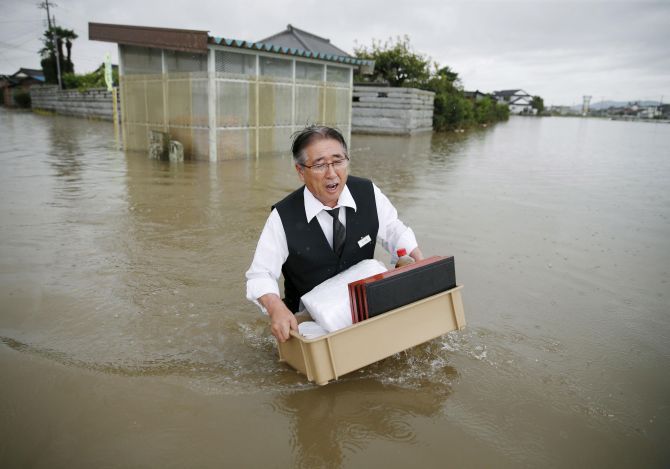
A man holding a tray of belongings wades through a road at an area flooded by the Omoigawa River, caused by typhoon Etau in Oyama, Tochigi prefecture, Japan. Photograph: Kyodo/ Reuters
Rescue helicopters picked marooned residents from the roofs of their homes after waters surged over a wide area when a river burst its banks, swamping a city of 65,000 people.

More than one lakh people were asked to vacate their homes after much of northeast Japan was knocked about by rampant rains, with up to 60 centimetres (two feet) falling in some places.

Men look at the flooded Kinugawa River, caused by typhoon Etau, in Joso, Ibaraki prefecture, Japan. Photograph: Issei Kato/ Reuters
Some areas received double the usual September rainfall in 48 hours after tropical storm Etau swept across Japan's main island of Honshu. In some places, rain-swollen rivers burst their banks.
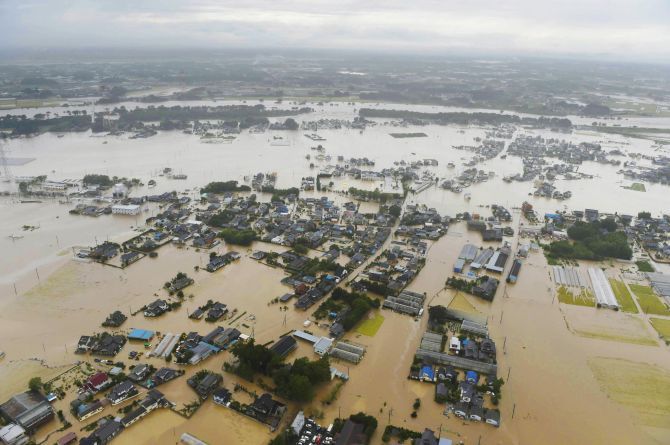
An aerial view shows residential areas flooded by the Kinugawa River (top), caused by typhoon Etau in Joso, Ibaraki prefecture, Japan. Photograph: Kyodo/ Reuters
Helicopters hovered over the swirling waters as they rescued many people. Seven people were missing and at least 17 were injured, one seriously.
One man was seen clutching a concrete post as waters swirled around him.

TV footage also showed an elderly couple clutching a pair of struggling dogs as the flood tore away pieces of their home.
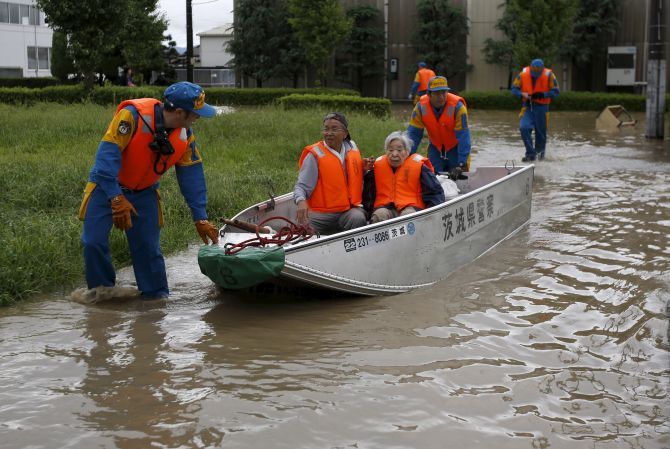
No one had so far been confirmed dead, but there were reports of people missing, including in landslides that buried buildings.
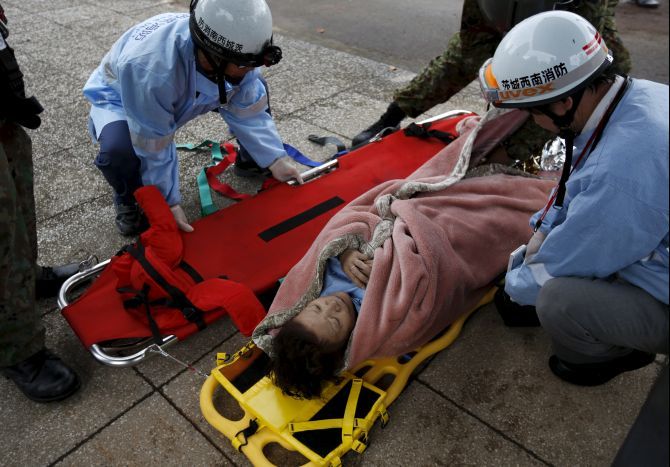
Television footage showed residents of Joso waving towels whilst awaiting help as the world witnessed their homes engulfed in floods after the overflowing Kinugawa river swept through.
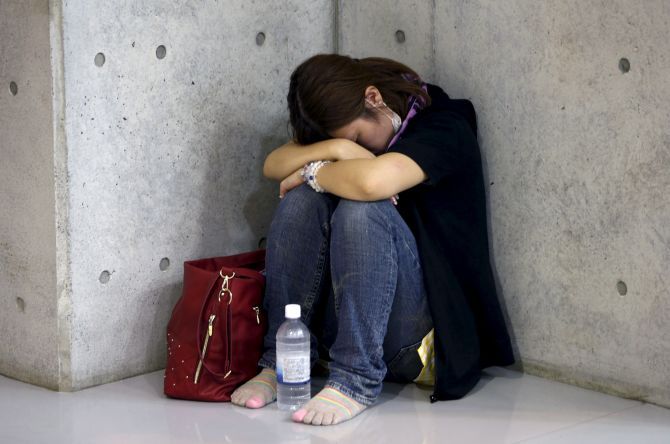
An estimated 200 people were still trapped in their homes or other buildings, including a day care centre and a senior citizens' home.
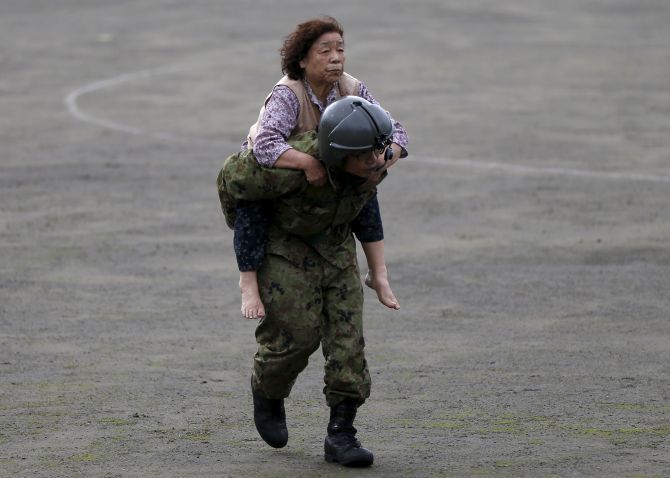
Rainfall reached 500 mm (20 inches) around Joso, authorities said, with weather officials expecting at least 200 mm (8 inches) more in parts of eastern Japan, including Fukushima, the site of the nuclear reactor crippled in 2011, before the downpour stops on Friday.
Flooding complicated a contaminated water problem at the already crippled Fukushima plant, where the site's drainage pumps were overwhelmed, sending radiation-tainted water into the ocean, a spokesman for operator Tokyo Electric Power said.
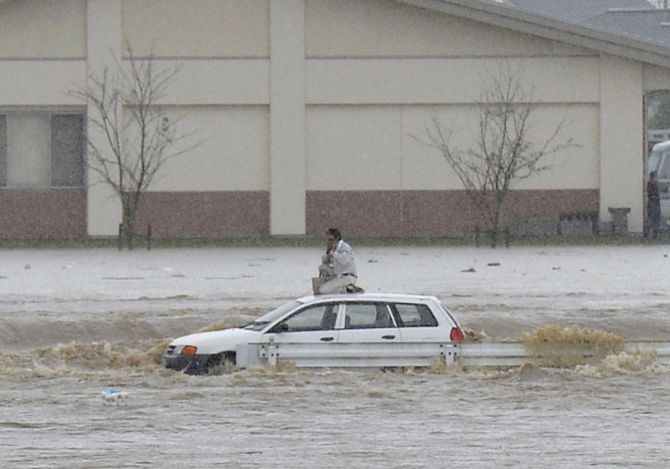
Japan’s Prime Minister Shinzo Abe said the government had been placed on high alert, and swore to put rescuing civilians on the "highest priority".











 © 2025
© 2025